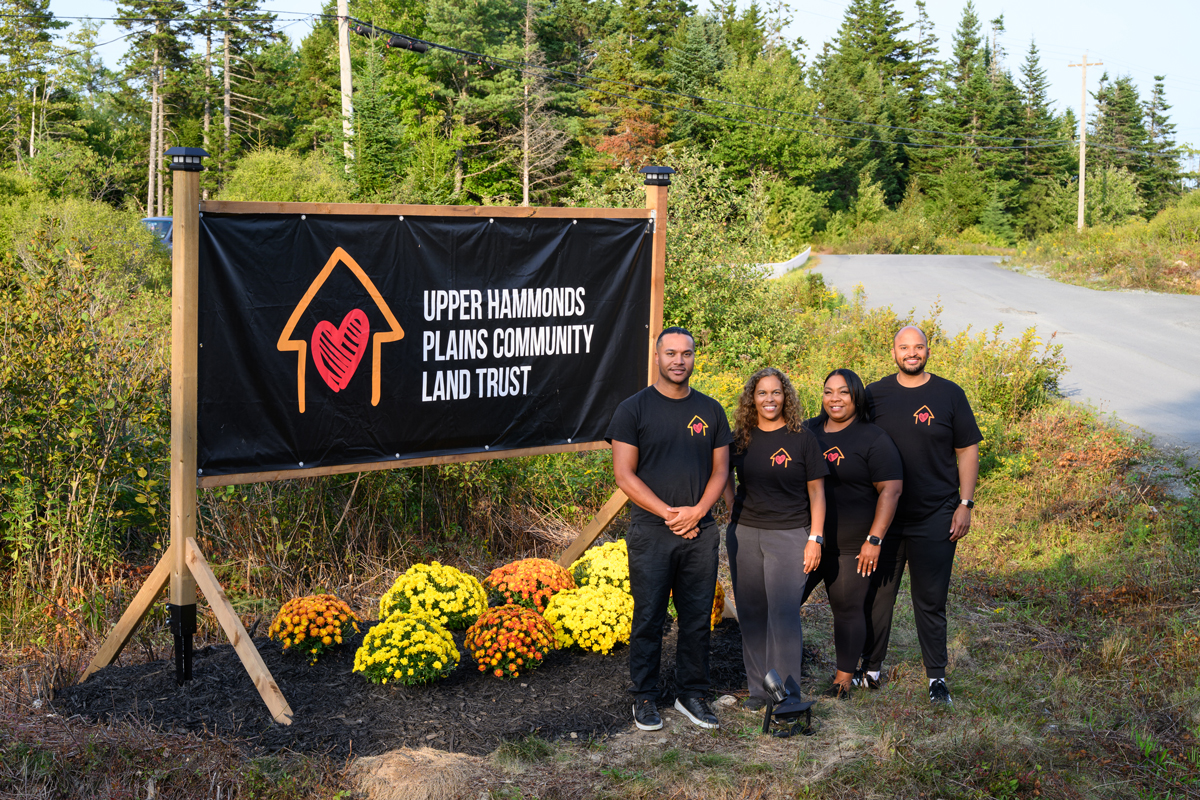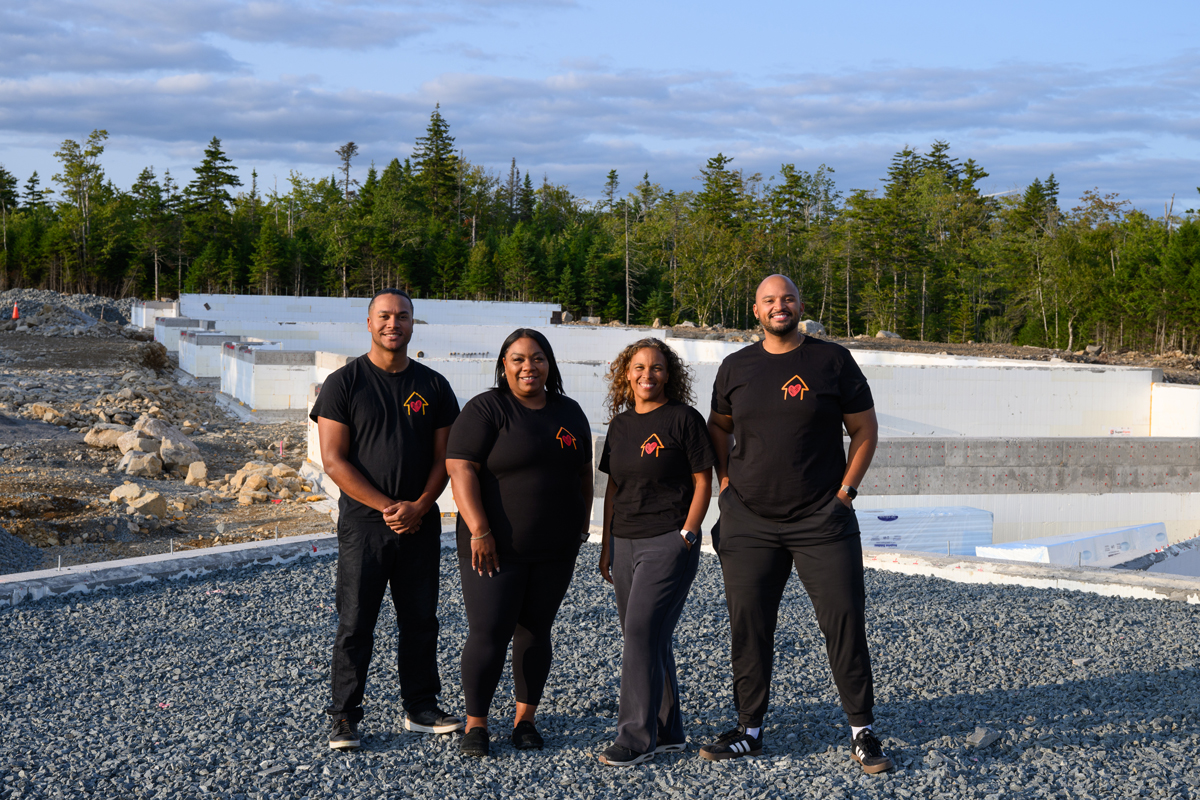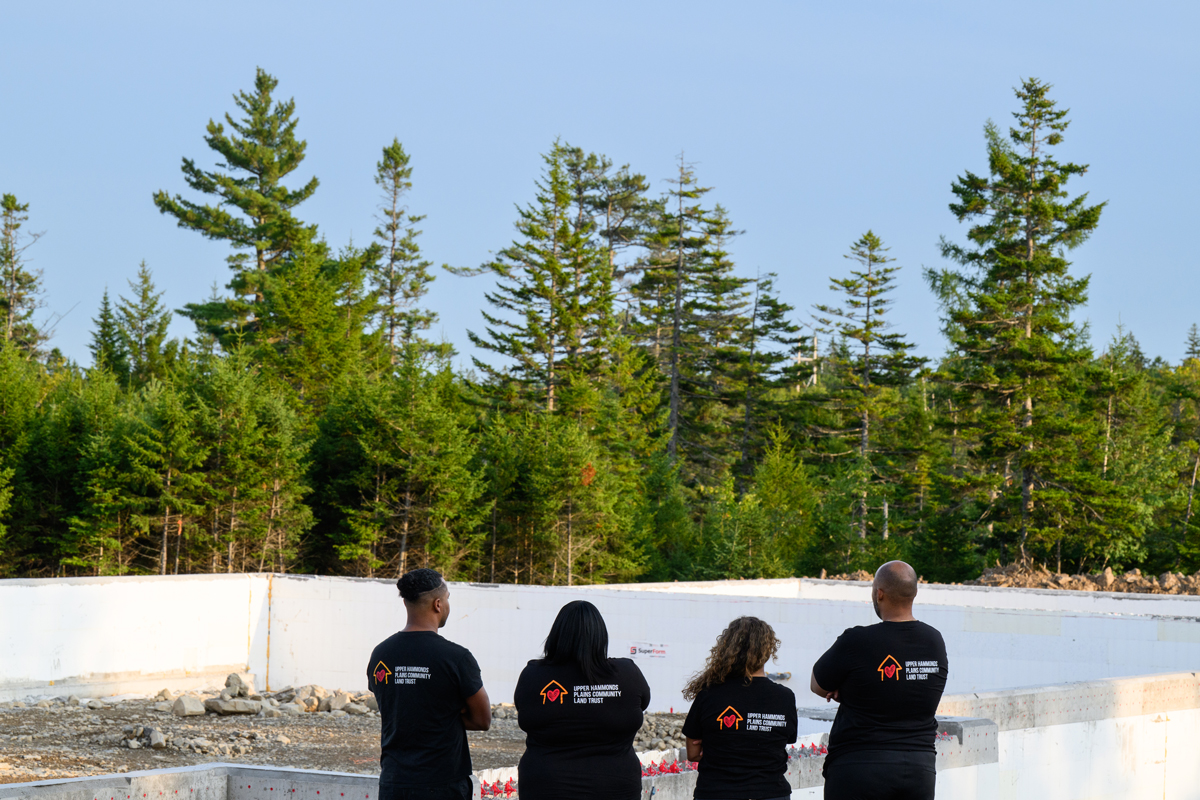October 24, 2025

AT A GLANCE
- For more than 200 years, the Nova Scotian community of Upper Hammonds Plains has struggled with precarious land titles.
- Without clear land titles, some residents couldn’t access government funding for home repairs.
- The community’s zoning also created a favourable environment for development.
- Upper Hammonds Plains descendant Curtis Whiley created a land trust to protect the community.
- With support from the Co-operative Housing Development Fund, the trust is developing the first community-owned housing development.
“It is a wild story.”
Curtis Whiley has had a busy few years. From administering co-operative housing agreements and delivering home repair programs at the Government of Nova Scotia’s Department of Growth and Development, to creating the province’s first Black-led Community Land Trust and spearheading a co-operative housing project.
“A couple of things have come full circle for me,” says Curtis.
After university, he secured a job with the province, helping applicants apply for funding to repair their homes. However, he kept coming up against an issue: many applicants couldn’t provide proof of title.
“The property was in the name of a deceased relative or there was some other precarious title position, and it was preventing these folks from obtaining government programs,” he explains.
The Government of Nova Scotia created the Land Titles Initiative with the goal to clarify land title for African Nova Scotians based on use and occupation. Curtis joined the team to support this important work.
An empty promise
Upper Hammonds Plains is an 85-homestead community located 25km northwest of Halifax. For more than 200 years the community has been battling the issue of precarious land titles.
“My ancestors fought in the war [of 1812],” says Curtis. “My great-great-great grandfather came here as a free man...it was a mixture of free black folks and refugees who were promised land in exchange for fighting in the war.”
When they arrived, they were given tickets of location or licences of occupation – but not land titles. When the tickets and licences expired, they were left without ownership of their property.
“It was done by design,” says Curtis. “Ownership was…is a driver of power and financial leverage.”
Despite these challenges, the community persevered and flourished. However, the issue of land titles question became increasingly complex over time.

Northern exposure
During the COVID-19 pandemic, while many hunkered down with their sourdough starters, Curtis took a different approach.
“I decided I would be adventurous. I moved to Nunavut and worked for the Nunavut Housing Corporation,” he says.
Curtis learned about Nunavut’s unique relationship to the Nuna (land). “Ownership” is secondary to “stewardship” and caring for the land is a shared responsibility. Residents and investors can lease land from local governments, but they can’t purchase it.
Community Land Trusts
- bring together partners to create long-term affordability solutions for a community
- remove properties from the speculative market to ensure permanent affordability
- support a variety of uses, including affordable housing, community gardens, commercial spaces and cultural amenities
This approach resonated with Curtis and led him down a path to community land trusts.
A mechanism to manage growth
Meanwhile, issues were bubbling back home.
The Halifax region was experiencing rapid population growth and development had reached Upper Hammonds Plains.
In less than a year, the 85-homestead community saw thousands of permitted units.
…this mechanism that we were all drawn to is actually rooted in the civil rights movement…that really pulled us forward.
In 2022, Curtis created the Upper Hammonds Plains Community Land Trust.
When he returned to Nova Scotia, he was joined by 3 board members.
“…we came to the understanding that it [community land trust model] was a mechanism that we can use to have a collective voice to combat the displacement and the development that was happening in Upper Hammonds Plains.”
No development without community approval
The rapid pace of permits was largely due to the community’s zoning.
“Folks had farms, folks had little shops…and so the zoning matched, that kind of rural style…you could build an apartment building. But no black people were doing that,” explains Curtis.
To address this, the land trust stepped in and, together with the Upper Hammonds Plains Community Development Association, led the community’s rezoning efforts.
“You can still build what you could build before,” says Curtis. “But you have to go through a development agreement process which requires community input.”
“What is a land trust?”
The team held information sessions to explore the land trust concept with the community. It was a time of rapid growth and learning for both the team and residents.
“I didn't know that it was rooted in black history,” says Curtis. “…this mechanism that we were all drawn to is actually rooted in the civil rights movement…that really pulled us forward.”
A presentation at the Canadian Network of Community Land Trusts Summit led to a connection with CMHC and a successful application for Solutions Lab funding.
Almost 100 people gathered at multiple sessions to discuss topics such as membership and governance.
“It really was the catalyst to elevate our work and bring our community together around some very important topics.”
The process helped the land trust to build trust and credibility with the community and partners.
“In folks’ minds, we had the biggest partner believing in us,” says Curtis “…It just took our branding and everything to a whole other level…It also made us believe we could do this and that we were on the right path.”
Opponents to partners
Despite the team’s progress, development in the community continued at pace.
By 2024 only 38% of properties in Upper Hammonds Plains were owned by families with ancestral ties to the community.
The same year, CMHC launched the Co-operative Housing Development Program…and community land trusts were eligible.
Curtis was thrilled by the opportunity. But there was a hitch. You had to build 75 units. Curtis had been considering a duplex.
“And then we started talking to this vendor in our community,” he recalls.
It was someone Curtis had been fighting against. “…he was permitting a lot of units in our community. So, I was really trying to stop him.”
…we used to just go to meetings and fight against something… now, we talk about the future.
But, the vendor wanted to be part of the conversation—and he had a permitted site.
Curtis suggested the idea of a co-op. The vendor agreed and offered not only the land but also help with the funding application.
Curtis’ relationship with the developer started out in a similar way.
“I used to say to them all the time that they needed to touch grass, right… to come back down to earth.”
As Curtis prepared the co-op application, the developer was building 400 units that matched those permitted on the co-op site.
“There were efficiencies to be gleaned from that,” says Curtis.
He reached out, the developer agreed and provided support with the application.
From “I can’t work with you” to partnering on a groundbreaking project, it has “become a much bigger story with both of those people.”
A possibility mindset
Three years after forming the Upper Hammonds Community Land Trust, a 136-unit co-op housing development is underway.
“This project enables us to remove profit from the equation and provide housing at more accessible rates than market-driven developments,” says Curtis. “It’s the first step toward our vision of providing a range of housing types and programs through a non-profit model.”
The team is also preparing to launch their membership.
“…the mindset is just completely shifted,” explains Curtis “…we used to just go to meetings and fight against something… now, we talk about the future.”
What does it mean to be on this journey?
“I don't even know how to answer that,” Curtis reflects. “I just…I can see it. I can see liberation, right? …Not just in my community, but across our communities…it harnesses a collective voice and today that's so important.”

Honouring the past
Recently, Curtis reached out to the community to explore street name suggestions. He received more than 50 potential names.
“Some represent historic family surnames. Others recognize beloved individuals who helped shape Upper Hammonds Plains.”
Naming streets is an act of storytelling. It is a way to reclaim space and embed our legacy into the land.
When asked what he thinks his great-great-great grandfather would say about the work being done, he reflects, “You did more than dream. You stood up. You took action. You built.”
KEY FACTS
- Upper Hammonds Plains Community Land Trust received funding from CMHC’s Co-op Housing Development Program. The program provides forgivable loans and low-interest repayable loans to build rental co-operative housing. It was co-designed with the Co-operative Housing Federation of Canada and the co-operative housing sector.
- Upper Hammonds Community Land Trust receives ongoing support through key partnerships with the Canadian Network of Community Land Trusts and the Co-operative Housing Federation of Canada.
- Upper Hammonds Plains Community Land Trust also received funding via CMHC’s Solutions Lab. The lab helped the team to explore paths to land acquisition, governance and membership.
SEE ALSO
- Federal government announces first projects funded under new Co-operative Housing Development Program
- Community Land Trust Holds Promise for African Nova Scotians
- Discover more research and information on community land trusts at CMHC’s Housing Knowledge Centre.






 Share via Email
Share via Email
